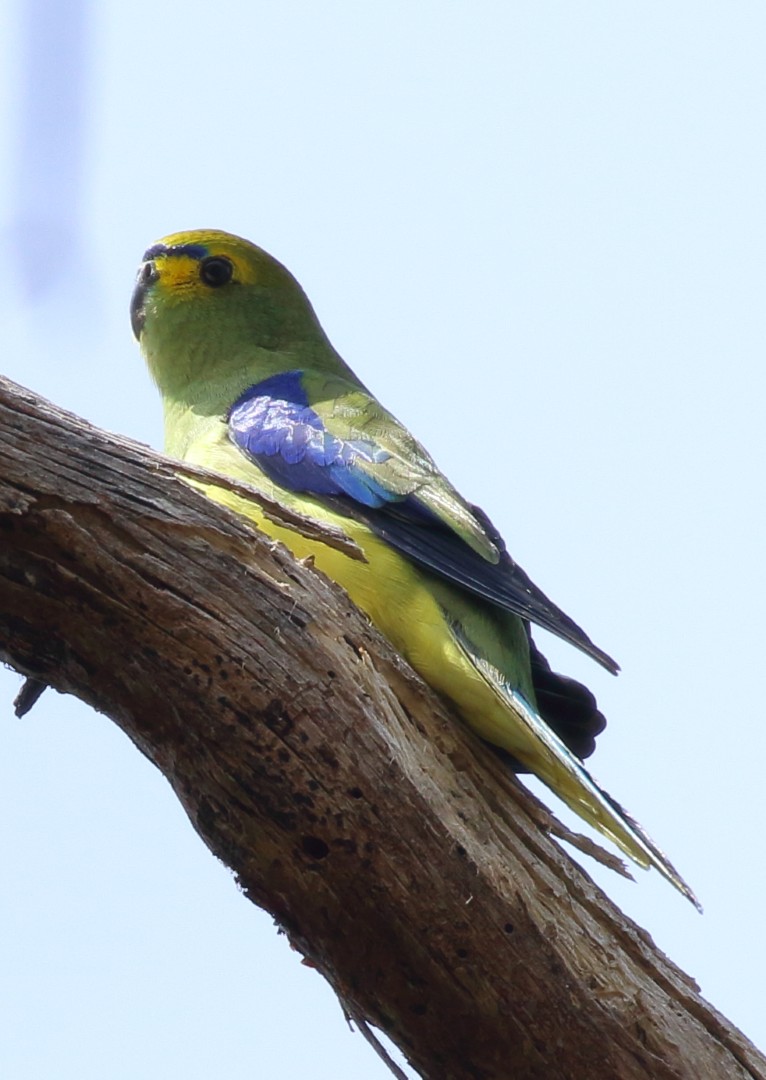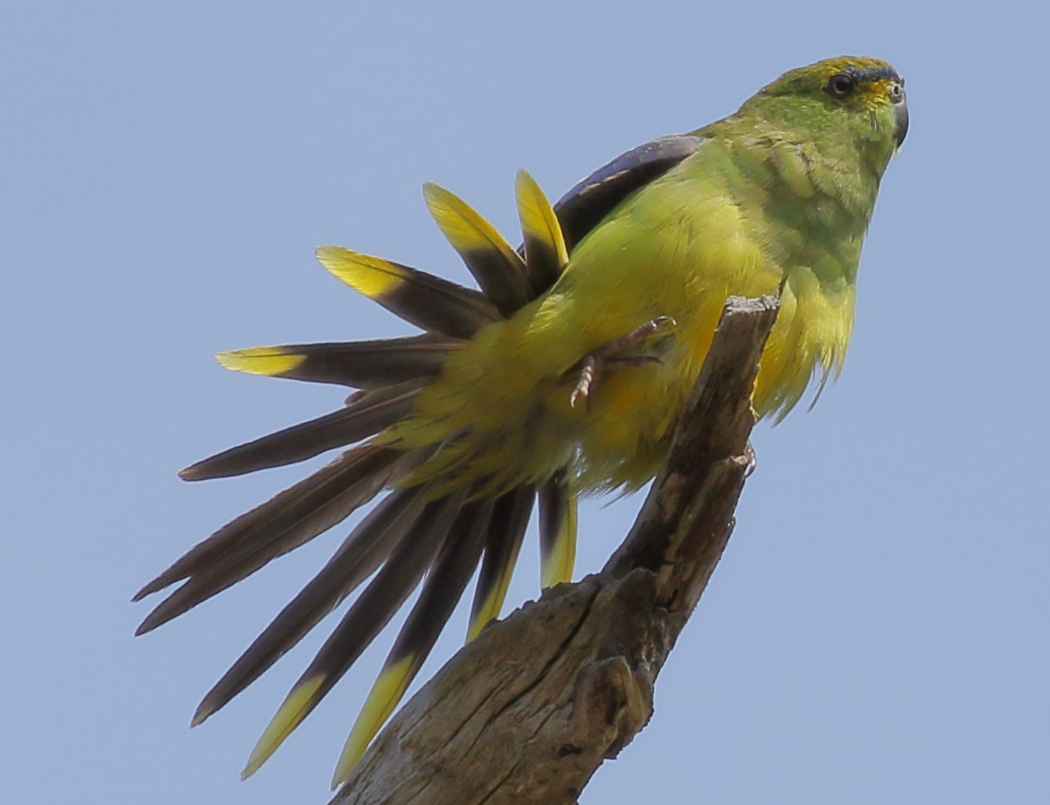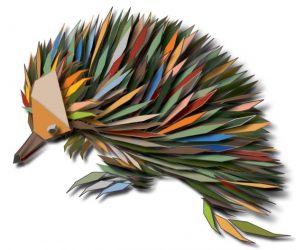- FoCC Annual Meeting
The 2025 FoCC Annual Meeting will be held at the Buninyong Community House on Wednesday 19th November beginning at 7PM. The purpose of the meeting is to receive the annual reports and elect the committee of management for 2026.
Guest Speaker: Peta Glen, Project Officer Parks Victoria
Presenting: “Woowookarung Citizen Science Bioscan Report”
The Woowookarung Citizen Science Bioscan Project Report is the culmination of 18 months hard work by Peta, friends, Ballarat community groups and the Nature Glenelg Trust. The report is described as: “This multi-year program is underpinned by research questions co-developed with the community. Focus areas include the condition of the vegetation across a range of Ecological Vegetation Classes (EVCs) and Floristic Mapping Units (FMUs) within the park, the biodiversity and ecological health of regenerating forest areas, the condition of the ephemeral waterways and creek lines, and the diversity and health of plant, animal, and fungal communities.” Ref: Page VIII Woowookarung Citizen Science Bioscan Program. Attendees are requested to register for catering purposes at: https://www.trybooking.com/DGZYZ
- Wildflower walk attracts 700 walkers
700 visitors walked the wildflower walk over the week of October 12 to 19th. New visitors to the walk were surprised at the variety and randomness of the flowers in bloom. Locals commented on the effects of a dry winter on the size and flowering times of some the wildflowers. A large patch of common bird orchid was found just inside the Welcome Wander trail.


The wildflower walk featured in interviews on local Radio Stations; ABC Ballarat, 3BA and Voice FM during the week. The walk was the tenth year of the FoCC and Field Naturalist Club Ballarat hosting the event. Visitors to the trail included the South East Australia Naturalists Association. The group was in Ballarat for a gathering and the visit to the wildflower walk was part of the agenda.

- Rotary Urban Ripple tree planting volunteer thankyou and sausage sizzle.
The FoCC and the Ballarat Rotary Clubs are holding a “Thankyou BBQ” and get together for the 700 Urban Ripple Tree planting volunteers

Where: Beside the Canadian Creek Reserve Playground in Hocking Avenue, Mt Clear.
When: 5pm to 7pm on Friday 7th November 2025
Who: All “Urban Ripple” tree planting volunteers from the July and August community tree planting days at Canadian Creek, Dozed Rd, Lal Lal Drain, Sailors Gully Creek and Soapy’s Dam.
The wonderful Rotary Clubs of Ballarat are hosting the free Sausage Sizzle and Cuppa. Please bring own chairs, nibbles, footies and cricket bats and see how the Canadian Creek plantings are thriving. Bookings essential for catering: https://www.trybooking.com/events/landing/1492581

- Ballarat Gardens for Wildlife host community walks
A well-attended walk was held at the Dementia Friendly Forest and Sensory Trail on Monday October 27th 2025. The focus was on the wildflowers and plants along the trail.

The Gardens for Wildlife run monthly walks and the next walk is as follows: Gardens For Wildlife – November walk
Slaty Creek Picnic Ground, Creswick Regional Park,
Date: Sunday 30 November, Time 2.00 pm – 3.15 pm
Bookings essential. Link to book; https://www.ballarateastnh.org.au/social-connection/backyard-biodiversity
- Murnong Yam Daisy fields.
Murnong yam daisy is a small plant which grows in local native bushland areas. It is characterised by thin leaves and a long stem of up to 30cms and a small yellow flower on top. The plant has a small edible tuber underneath. Murnong was a staple food for the Wadawurrung people until the mid-1840s, when the introduction of sheep grazed the yam almost to extinction. Murnong has been found growing in patches of up to 100 plants along the south side of Grasstree Creek in Woowookarung Regional Park. The flowers are the giveaway.

Urban Ripple Murnong Plantings. Over 100 Murnong Yam Daisies were planted at Soapy’s Dam beside the Canadian Creek in August as part of the Urban Ripple plantings. Spikey News will be keeping an eye of the plantings for progress.
- Soapy’s Dam mulch spreading working bee.
A mulch spreading working bee will be held on Tuesday 11th November, beginning at 9.30 and concluding 11.30, at the dam on Elsworth St E.
400 trees, shrubs and grasses were planted along Soapy’s Dam on Sunday 31st August. Mulching around the plantings will help keep weeds at bay and provide ongoing plant protection. The mulch is being sourced directly from Ballarat Garden Supplies next door and our task is to spread the mulch between the plants. Please bring, garden rakes, wide mouth shovels and wheelbarrows. All welcome. Gloves, vest and a cuppa will be provided by the Friends. Solid footwear and protective clothes recommended. Mulch can be dirty and dusty. Some people may wish to use masks when dusty conditions are encountered.
- 2025 Backyard Bird Count
Many FoCC friends participated in the Back Yard Bird Count between Sunday 19th to Sunday 26th October. According to the Birds Australia app 702 checklists were submitted, 147 species sighted and 24885 birds spotted for the Postcode 3350 (Ballarat). The results help Birds Australia to gauge the distribution and numbers of birds in our area.
- Bird of the Month 2025)
Blue-winged Parrot (Neophema chrysostoma)
Everyone loves our colourful Australian parrots, but after a while the usual local suspects of, with all due respect, Crimson Rosella and Rainbow Lorikeet tend to saturate our local parrot encounters, leaving variety to be desired. That is why, when Blue-winged Parrots arrive during its spring/summer breeding season, it is a novelty well worth the targeted search and admiration session. Cute, shy, little pocket rockets (at 20-23cm, scarcely larger than a Budgerigar), with an assortment of flattering pastel greens (powdery bluish green and olive), rich blues, and vivid yellow – it’s a parrot for which you cannot help but have your spirits uplifted upon experiencing its sweet charm!


Blue-winged Parrots are one of six species belonging to the Genus Neophema, which are colloquially referred to as the ‘Grass Parrots’ (however, be cautioned that the same colloquial moniker is often applied to one of rural Greater Ballarat’s other parrot varieties, the distantly related Red-rumped Parrot (Psephotus haemotonus)). Five of the six Neophema species occur in Victoria, but Blue-winged Parrot is the only one that occurs in Ballarat, making the species unmistakable here. The closest its congeners have come to our local area was an isolated sighting of nine Elegant Parrot (Neophema elegans) in Ararat (circa 1996), and a pair of Turquoise Parrot (Neophema pulchella) in Bendigo Regional Park (twice recorded, circa Dec 2023). On that evidence, Blue-winged Parrots are a rare representative of its genus in our parts, and their presence here is to be cherished! Adding to the significance of Neophemas is the fact that arguably Australia’s rarest parrot, the Orange-bellied Parrot (Neophema chrystogaster) is a flagship species among its congeners (be cautioned that some male Blue-winged Parrots have orange bellies).

Despite the colloquial moniker of ‘Ground Parrot’, Blue-winged Parrots are considerably flexible by Neophema standards, in terms of the vegetation communities in which they are able to occupy. They are often associated with cleared agricultural land, and it is in such environs where I often see them. But also, they breed in well wooded eucalypt forests, with Union Jack Reserve and Ditchfield Bushland Reserve being local examples. The full array of habitat types includes grassland, farmland, orchards, saltmarsh vegetation, coastal/ subcoastal woodland and forests (breeding season), sand dunes, wetland edges, alpine meadows, airfields, and semi-arid inland mallee and mulga (non-breeding season). The species is a granivore, i.e. it feeds on grains and seeds, taking a selection of both native and exotic grasses and herbs.
Breeding season is October through February. Typical of parrots, the Blue-winged Parrot is a hollow-nester. The breeding hollow is small and may be high up in a live or dead tree, or alternatively in a low stump, hollow fence post, or log. The female incubates a clutch of 4-6 eggs over the course of ~20 days, leaving the hollow several times daily to be fed by the male at a nearby perch. The male helps care for the young, which fledge and have their maiden flight at 4-5 weeks old. Several pairs may nest nearby, indicating the species is not territorial towards its own kind.
The population is one species (i.e. no races/subspecies) throughout its entire distribution, which encompasses much of southeast Australia; breeding in coastal/subcoastal Victoria (inland as far north as the Grampians), southeast SA, and Tasmania, and wintering in inland NSW, southwest QLD, and east SA up to the NT border. The Tasmanian population (again, not genetically distinct), breeds in the island state, where it is a listed threatened species, and migrates to the mainland from March to Sep-Oct. In Victoria, it does not qualify as a listed threatened species, but globally the Blue-winged Parrot has a conservation status of Vulnerable (V), with a decreasing population trend. The species is considered uncommon.
Given its conservation significance, it would be advisable to ensure any encounters are accurately identified and recorded (if you’re so inclined, I’d encourage you to submit your sighting details to any of the free citizen science database, available on smart phone and desktop web browser, e.g. eBird, Birdata, iNaturalist, Victorian Biodiversity Atlas, Atlas of Living Australia. As always, FoCCers are invited to reach out to us with ID requests!). In scenarios where plumage detail is indeterminate, such as fleetingly glimpsed small parrots in flight, and auditory observations of vocalising birds, the following cues could be helpful:
- Voice:
-
-
- ‘thin and high-pitched’
- ‘more likely highest squeaks of a thornbill or fairywren than a parrot’
-
- ‘In flight: a repeated tinkling two-note “tsleet tsleet”
- ‘When flushed: a staccato burst “tsit tsit tsit tsit”
-
-
- Flight behaviour:
- ‘Swift, direct, with little undulation’
- ‘Flies high, with quick, wader-like hesitation in wingbeats’
Next time you wander through Woowookarung RP, Union Jack Reserve (particularly the northwest of reserve), and the Corridor’s other forest patches (e.g. Ditchfield), be sure to give yourself every opportunity of a chance encounter with the cute, novel parrots that vocalise like thornbills and fly like waders – no guarantees you’ll find a Blue-winged Parrot, but what can be guaranteed is, if you are treated to clear views, it is a species thar will have your spirits instantly uplifted!
Author note: FoCC Committee member and co-admin of FoCC’s Facebook and webpage, Joel Ellis is the resident bird nerd, amateur Powerful Owl researcher, and editor of FoCC’s (co-funded) ‘Indigenous [Species] of Southern Ballarat’ brochure series.
- Koala Sightings

 October to March is Koala breeding season and peak sightings time. If you see, hear or find scat from a Koala, please send the information containing the when, where, and how to: foccinfo@gmail.com. Images are gold (even if a little blurry). All Koala sightings are entered into the iNaturalist online data base. The complete list of sightings can be viewed at https://www.focc.asn.au/koalas/
October to March is Koala breeding season and peak sightings time. If you see, hear or find scat from a Koala, please send the information containing the when, where, and how to: foccinfo@gmail.com. Images are gold (even if a little blurry). All Koala sightings are entered into the iNaturalist online data base. The complete list of sightings can be viewed at https://www.focc.asn.au/koalas/
- Federation University Studies
Federation University TAFE Conservation and Ecosystem Management students have been busy involved in the “Woowookarung Citizen Science Bioscan Program” over the past year. On Monday 27th October students were busy establishing new long-term vegetation monitoring plots across the park’s diverse habitats. Despite the cool Ballarat spring weather, students were enthusiastic to spend two full days in the field, and their plant ID skills were outstanding! The survey methodology was developed in collaboration with Nature Glenelg Trust and refined with input from the Parks Victoria Science & Knowledge Team. This program has now been embedded into a core TAFE subject, creating an ongoing opportunity for students to contribute to real-world biodiversity monitoring while helping track vegetation change to inform park management.


A transect has a line of pegs at 5 metre intervals along a 25-metre line. The vegetation and canopy above the line is recorded. Future studies will be able to return as see whether the vegetation and canopy have changed over time. This is a very effective method of tracking forest growth or decline
- York and Wilson St grasstree skirt burning
Fire Management Victoria have begun fuel reduction burns in the York St and Wilson St block. The firsts step is to burn the grasstree skirts this year and follow up with a second burn next year. Burning the Grasstree skirts first is a cool burn approach and reduces the heat involved in the next years burn. Expect some spectacular grasstree flowerings in a couple of years.


- Garden escapees in the Park.
Blue Bell creeper is pest that is found throughout the Park. It is an escapee from gardens and spreads easily. The only good thing about blue bell creeper is that it is easily pulled out. Just grab it and pull it out! It has very shallow roots.

Other plant pests in the Park are pine seedlings, gorse, broom, blackberry and other plants, some from garden dumpings.
- Rubbish dumpers, thieves and vandals
The FoCC urges Park friends to report vandals as well as rubbish dumpers, wood thieves and other suspicious activity to Parks Victoria on 13 1963 or email: woowookarung@parks.vic.gov.au In emergency situations please call 000. If an offender is spotted, please note vehicle registration details as vehicle identification is most helpful, plus location and details. All information is treated by Parks Victoria Rangers professionally and confidentially.
- Useful information
Parks Victoria Woowookarung email address: woowookarung@parks.vic.gov.au
City of Ballarat wildlife information: https://www.ballarat.vic.gov.au/me/pets-and-animals/wildlife
Wildlife Victoria (03) 8400 7300
DEECA wildlife issues reporting information Report wildlife crime to Crime Stoppers Victoria on 1800 333 000. Report any wildlife at immediate risk of deliberate harm or neglect to 136 186. Other matters relating to wildlife and wildlife management should use the 136 186 too. The Help for Injured Wildlife tool will help you locate and contact the closest relevant wildlife carers and rescue and rehabilitation organisations to help the injured wildlife.
Membership runs from 1st January to 31st December each year, Membership fee is $20 per year. New members and renewals after July 1 are credited to the next year. Membership is available online or email foccinfo@gmail.com
- FoCC Facebook and webpage www.facebook.com/friendsofcanadiancorridor/ Rob is overseeing the webpage webmaster@focc.asn.au The FoCC has over 1300+ friends following us on Facebook and growing. Welcome to all new friends. Feel free to pass on to other friends and press the Like button.



